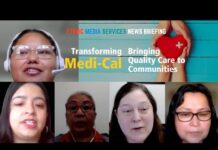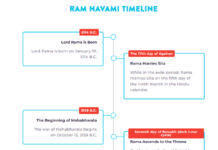 Vidya Sethuraman
Vidya Sethuraman
India Post News Service
San Mateo County, located in the Bay Area on the San Francisco Peninsula between the cities of San Francisco and Palo Alto. San Mateo County is leading the state in census returns with 72.8% of households having responded as of Tuesday June 30, but county officials say more work is needed to ensure that the hardest to count populations are included.
San Mateo County has achieved the highest census self-response rate in California by working with local organizations that know their communities intimately and by targeting messages to them. Outreach groups have had to adopt new strategies on the fly, and many now primarily rely on phone banking, text messaging and social media campaigns to get the word out.
“Given the challenges we faced this year, I am so pleased and thankful for all the work everyone is doing,” county Census Management Analyst Megan Gosh said during a teleconference hosted by Ethnic Media Services.
Gosh said the county has spent nearly two years and $1.3 million to organize public awareness campaigns aimed at encouraging people to fill out the U.S. Census Bureau questionnaire, with much of that money being doled out to community groups with intimate knowledge of the area’s hardest-to-count populations. Those populations, including Latino, African American, Asian, Native Hawaiian and Pacific Islander and immigrant communities, have historically experienced significant undercounts.
“We had plenty of challenges: 13 of 20 cities in San Mateo have a combination of hard-to-count census tracks, as well as unincorporated areas all over the county,” she said. Hard-to-count groups include renters, noncitizen residents with limited English proficiency and children under 5 years old, she added. California itself is a hard-to-count state.
Rita Mancera, executive director of Puente, a nonprofit social services organization, said, “We are missing a lot of people.” Part of that is because the census doesn’t send forms to post office boxes and many people don’t have traditional addresses.
Also, because the area is so large, about 164 square miles, it’s not easy to physically find and count every individual, she said. Creativity and flexibility are key components of the strategies local organizations have used. Many immigrant residents have trust issues because of their experience in their home countries, Mancera said. But the organization has used its relationship with those communities and families to get them to participate in the census.
Nina Li, community outreach coordinator with the San Mateo County Office of Community Affairs, said that while roughly 30% of the county’s population is Asian, many are experiencing the census for the first time. Chinese, Tagalog and Hindi are the most spoken non-English languages, aside from Spanish in this county.
“Census is a totally new concept with them,” Li said. “The biggest misconception to them is they think that the census is very similar to an election where you have to be a citizen to participate.” We have used We Chat, a social media platform popular in Asia, and targeted messages to permanent residents and even temporary visa holders.
African Americans, too, often have a distrust of the federal government and have had to overcome the bias and racism built into the census, which for many years only counted them as three-fifths of a person, said Lisa Tealer, executive director of the Bay Area Community Health Advisory Council.
Similarly, the Pacific Islander community residents respond to the idea that the census is a way to ensure resources for the new generations, said Talavoy Aumavae, leader in the San Mateo County Pacific Islander Complete Count Committee.
Despite these and other obstacles to a full count, San Mateo County appears poised to surpass participation numbers from 2010 by the time the count winds down on Oct. 31. “We are ecstatic to be number one in the state, but we have a lot of work to do,” said Melissa Vergara, a census specialist with the San Mateo County Office of Community Affairs.






